Each year in November, the TIME photo team comes together to narrow down the thousands of images made by photographers around the world since January. The ones that make the final cut for our top 10 can be striking in composition, shocking to experience, news-making moments, or all of the above. We find ourselves pausing to honor these images and their creators because we know there is so much more to the photograph than just the click of a shutter.
Read More: TIME’s Top 100 Photos of 2021
The photographers in these situations care deeply for the people and environments in their images, building connections that go well beyond the single instant. Like Konstantinos Tsakalidis, who looked out for the wellbeing of the people in his photographs of the wildfires in his home country of Greece, while assessing his own safety. Or Meridith Kohut, who has been on the front lines of the COVID-19 surge, working 15-18 hour days alongside the staff—something she says is crucial to building the kind of trust with the people in her photos and being allowed in the room when scenes unfold. Or Scott McIntyre, who simply wanted to capture the joy of Spelling Bee winner Zaila Avant-garde.
These 10 images tell a story of a year full of hardships and perseverance, a year where photographs gave us glimpses of a world that often felt out of reach. The images, and the people who made them, show us the power of great photography: to move us, to connect us, and to remind us of our shared humanity. —Kim Bubello and Ciara Nugent
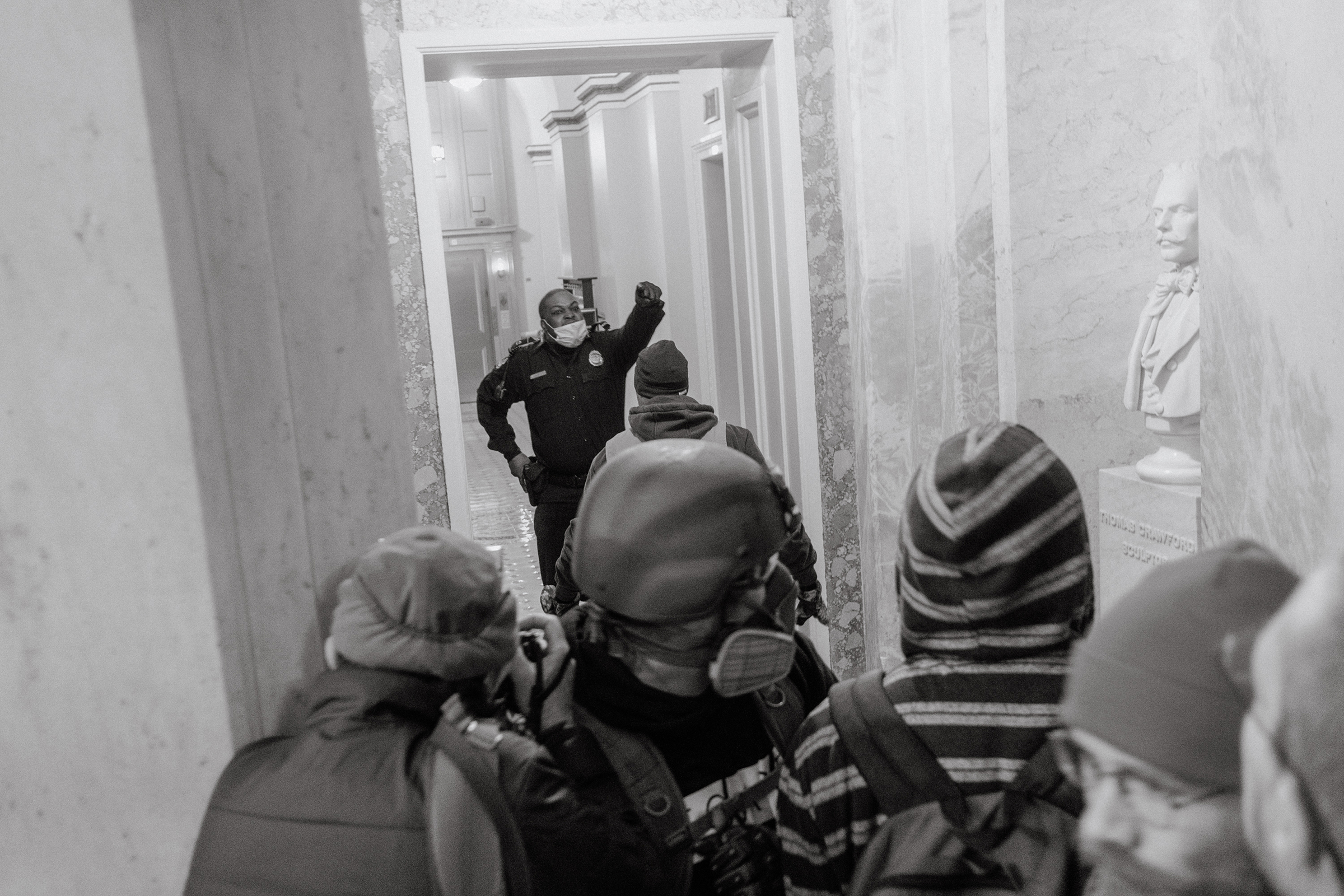
‘A Truly Horrible Day in U.S. history’
Photographer Christopher Lee was on assignment for TIME in Washington on Jan. 6 to photograph President Donald Trump’s “Stop The Steal” rally. Soon, things began to escalate, and Lee found himself weaving among groups of people fighting with Capitol police. “A couple photographers and I noticed how the energy was turning towards the inside of the building,” Lee recalls, “and we followed along as angry Trump supporters broke down windows to get in.”
Having never been inside the Capitol before and wary of the risk to his own safety, Lee says he felt hyper alert as he moved along with the crowds, not knowing where they were going. At one point, the mob turned a corner and began shouting at a lone officer—who Lee later learnt was named Eugene Goodman—who blocked their way and held them off. “I think what made not only this particular image, but also all the images from that day, successful was creating an emotional and contextual picture of what it was like to be there at the Capitol on a truly horrible day in U.S. history,” Lee says. “I wanted to show not only the bravery of Officer Eugene Goodman but also who he was standing against and where he was doing it. I think all of that was in the picture.”
Five people, including an officer, would die, and more than 140 officers would be injured. Months on, one of the things that has stayed with Lee was how unprepared most Americans were for the riots. “We all thought this could never happen here in America. That somehow we as a country were immune to an insurrection by its own radicalized citizens. I hope that this day continues to be discussed and examined, with context as to how we got here and how we will continue as a country.”

‘There Wouldn’t Be Much Time’
On Aug. 26, two suicide bombers and a gunman launched an attack on Kabul airport, where hundreds of Afghans had flocked, trying to flee their country amid the U.S.’ chaotic military withdrawal. More than 170 Afghan civilians were killed, along with 13 U.S. service members.
Two days later, the Taliban had gained control of parts of the airport and their guards were holding back the crowds who tried to enter. Photographer Jim Huylebroek says he was also initially turned away “in a rather aggressive fashion.” But as the sun began to set and the blistering temperatures dropped, people started to disperse and Huylebroek decided he would try his luck one last time at the main entrance. “When I stated to the Taliban fighters manning the gate that I was a foreigner and why I was there, the commander responded to me in fluent English. That was unexpected and weirdly scary,” Huylebroek says. He guided me into the airport premises, just past the gate but I wasn’t allowed to photograph. It was prayer time and all the fighters lined up in their new American-style combat uniforms, so I asked if I could at least take a picture of that. The commander agreed, so I looked around for a good angle, knowing there wouldn’t be much time.” The Talibs had gathered under the “Welcome to Kabul” sign at airport’s purple-lit entrance gate.
“In the end photography can be about perseverance,” Huylebroek says. “It took me all day in the blistering heat, and a few bruises to go with it to shoot only one scene, but I’m happy I pushed through.”
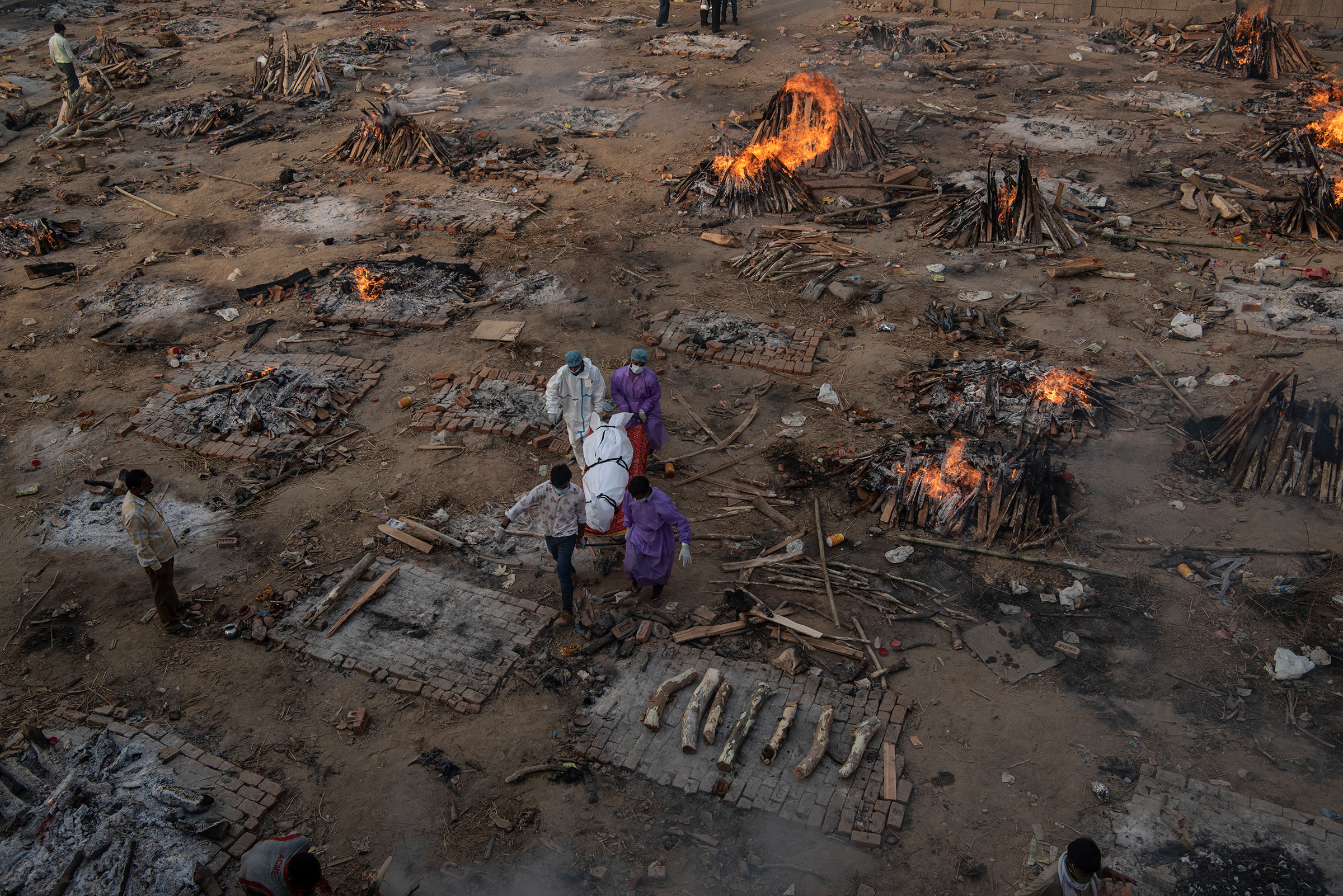
‘The Scale of the Tragedy’
Covering India’s COVID-19 crisis in April was emotionally exhausting for Saumya Khandelwal, whose image of the devastating second wave was featured on TIME’s international cover. “What we were witnessing was rare and tragic. I, as a photojournalist, had personal struggles too,” she recalls. “At this time, there was so much bad news about the pandemic and there were so many friends and family members who were struggling with COVID-19 themselves.”
Khandelwal’s assignment brought her to a crematorium in New Delhi, where she watched as Shivam Verma (in white PPE) and relatives carried the body of his sister-in-law, Bharti, 48, who died of COVID-19.
A family allowed her to climb up onto their roof to capture the scene. She briefly considered waiting for more of the funeral pyres to be lit, she says, but decided against it. “It was too harsh, I thought, to put out in terms of visuals. I felt I was successful in putting across the scale of the tragedy without showing very graphic visuals,” she says. “[It was] a learning [moment] for me—when news is so much a cause of stress and grief for people, how do you approach it sensitively to help people deal with it?”
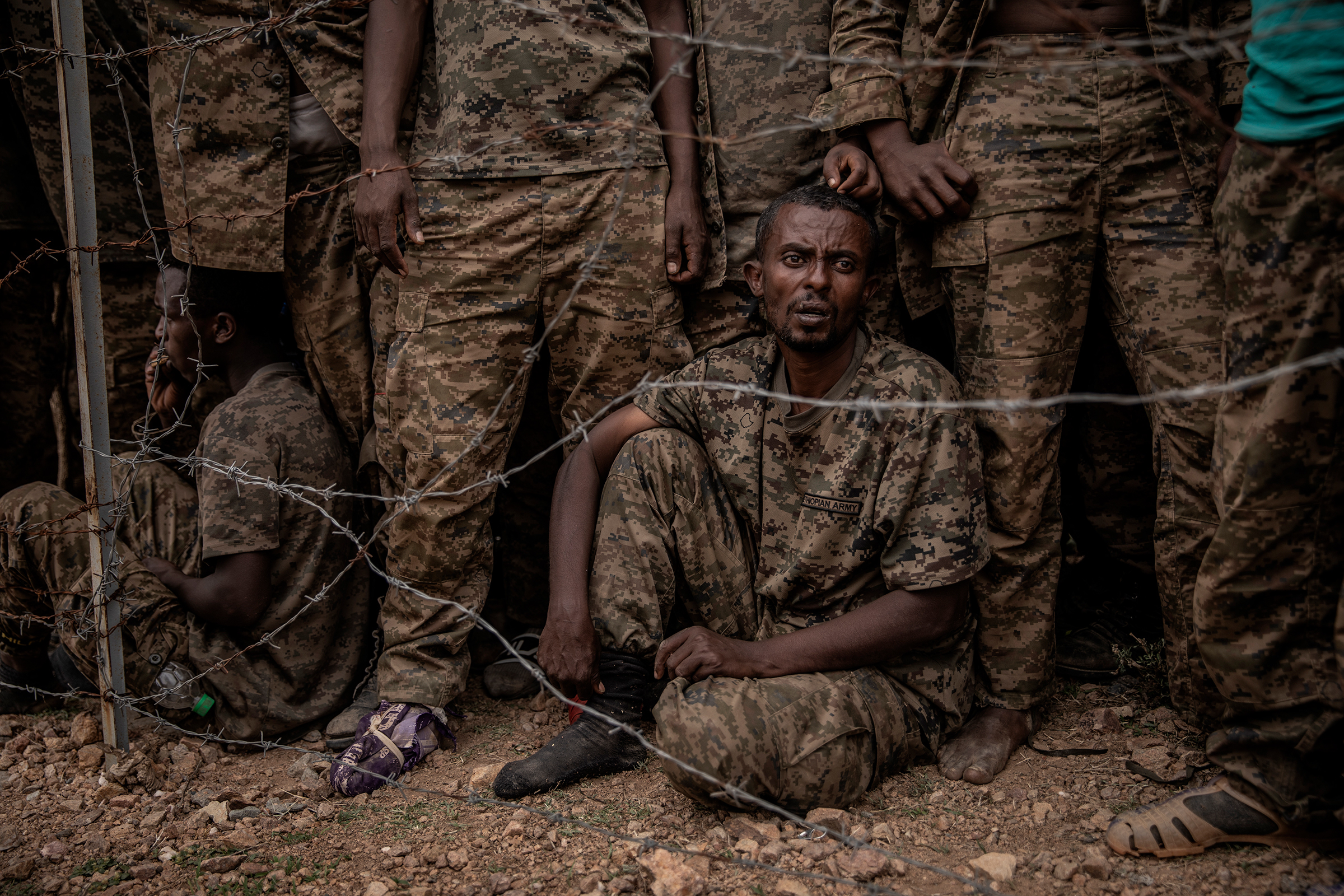
‘At the Mercy of their Enemy’
Ethiopia’s government has tried to suppress news of the civil war unfolding in the country’s northern Tigray region, in which all sides are accused of atrocities, by blocking media from entering affected areas. But in June, after covering Ethiopia’s election, photojournalist Finbarr O’Reilly and New York Times reporter Declan Walsh managed to slip through checkpoints to arrive at frontline positions held by Tigrayan rebels.
“We were the only journalists to witness from the front lines a cascade of Tigrayan victories that culminated in their retaking the region’s capital, altering the course of the war,” says O’Reilly. They soon met Tigrayan leaders who claimed to have captured thousands of government troops, which the government denied. “The Tigrayans granted us access and it was a remarkable scene with several thousand bedraggled Ethiopian soldiers being held under guard in a fenced, open-air compound,” he explains. “I’d never seen anything like it. The last time I could recall anything similar were photographs of prison camps during the Balkan wars.”
O’Reilly says he approached the images “more forensically than creatively,” making the most of the unusual access to document the scale of the site and the condition of individual prisoners. When the images were finally published, after a delay due to security concerns and Internet access, O’Reilly was unsure about how the government would react to the publication of evidence of their defeat.
“I just wanted to show some of the toll that war takes on those who fight it,” he says. “There’s a lot of bellicose posturing from politicians and from people on social media fueling this conflict, but at its core, war comes down to moments like this, when one side or the other finds itself at the mercy of their enemy.”

‘You Need to See What’s Going on Here’
On April 11, photographer Joshua Lott was at an event in St. Paul, Minn. for families who lost a loved one to police violence when he heard that another young man had just been shot and killed by police in nearby Brooklyn Center. Lott learned about it from John Garcia, the father of Kobe Dimock-Heisler, a 21-year-old killed in a fatal police shooting in 2019, who received an alert on his phone. When Lott arrived in Brooklyn Center, where protesters and police were gathering, a demonstrator told him that the victim was Daunte Wright.
Lott wasn’t wearing any tactical gear so he went back to his car to reassess and better prepare for the situation. It was then that he came across a group of people huddling together, wrapping their arms around each other. “I made a few frames and it was really difficult for me because I knew it wasn’t one of those stares that was kind of like you know, ’stop taking pictures of me, get out of here,” Lott says of Emajay Driver, a close friend of Wright and the person staring into the lens in the photograph.
“I think him staring at me just kind of [said], ‘you need to feel my pain. You need to see what’s going on here and that this is happening to me one too many times here in the Minneapolis area.’ I felt like he was struggling to understand what just happened to his best friend. So that was pretty powerful. It really touched me.”

‘Happiness Needs to Be Photographed’
Photographer Scott McIntyre’s assignment for The New York Times at the Scripps Spelling Bee flew by as he worked quickly to cater to the live news coverage of the competition. All of a sudden, 14-year-old Zaila Avant-garde was spelling the final word that would, if spelt correctly, make her the champion. “Once the moment of the final word came, I knew that after seeing photographs from past contests, whoever wins will be showered with confetti,” McIntyre says.
Using a long lens, he focused straight in on Avant-garde, and waited for the judge to say if the spelling was correct. “It all happened so quickly,” he recalls. Zaila jumped in the air just as the confetti started to rain over her, and the excitement became contagious. “I made several photographs as she basked in victory, but I knew when she put her hands on her forehead, closed her eyes, and cheered in celebration, that her world was changing.”
McIntyre was grateful for the opportunity to capture something as straightforwardly joyful as Avant-garde’s victory. “Photojournalism can be a heartbreaking profession at times, especially the past couple of years. It’s a reminder that happiness needs to be photographed along with the hard truths of the world.”
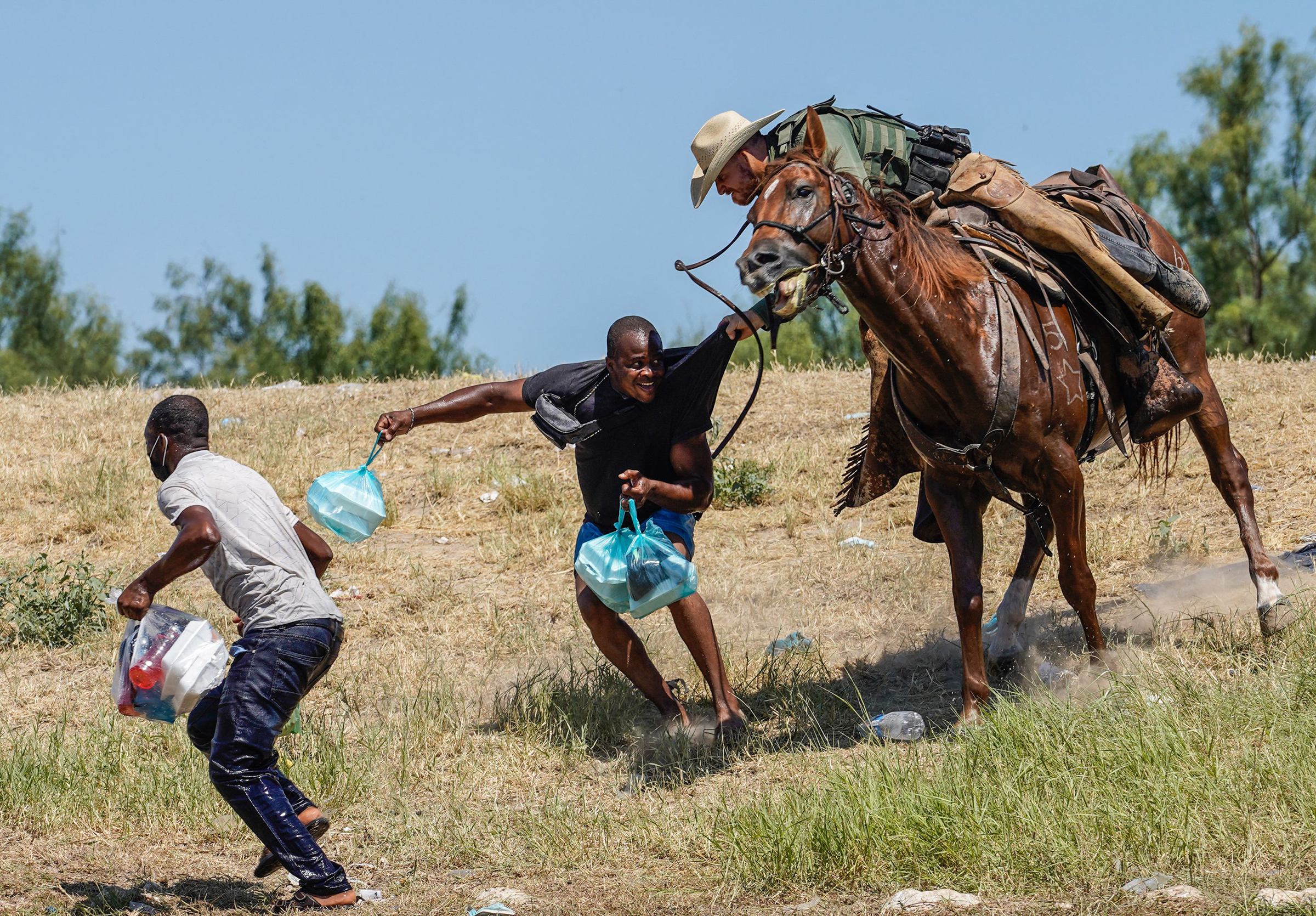
‘Criminalization of Desperate Migration’
In September, a sudden spike in the arrival of migrants from Haiti—which had been hit by a devastating earthquake in August—caught the Biden Administration off guard at the Texas border. Thousands of migrants gathered at a makeshift camp near Del Rio, under an international bridge, and were crossing back and forth over a dam on the Rio Grande into Mexico to buy food and water as they waited to be able to claim asylum.
On Sept. 19, photographer Paul Ratje navigated border closures imposed by U.S. authorities to make it to Ciudad Acuña on the Mexican side of the border. He was standing waist-deep in the river, photographing people making the crossing, when a group of border agents arrived on horseback on the U.S. side. “When I heard Border Patrol starting to shout at the migrants to leave the banks, I knew something tense was about to happen, ” Ratje says. He noticed a man in blue shorts starting to run up the bank, he adds. “The border patrol agent chased after him, grabbing his shirt. They spun around in a circle and the agent eventually let the man go. I was relieved that he was released appearing uninjured, and then he just disappeared over the bank of the river, and was gone.”
The image that Ratje captured of this moment appeared on news wires and made its way into publications all over the country, sparking fierce reactions from both sides of the immigration debate, including on the iconography of the long leather reins that many viewers interpreted as whips. “There are so many layers to this scene. For many it echoes our country’s dark history, while for others, it angers them that migrants are crossing our borders,” Ratje says. “ I learned that in our day and age, everything is subject to interpretation, despite how a given photographer may perceive their own image. To me, it simply shows the criminalization of desperate migration.”
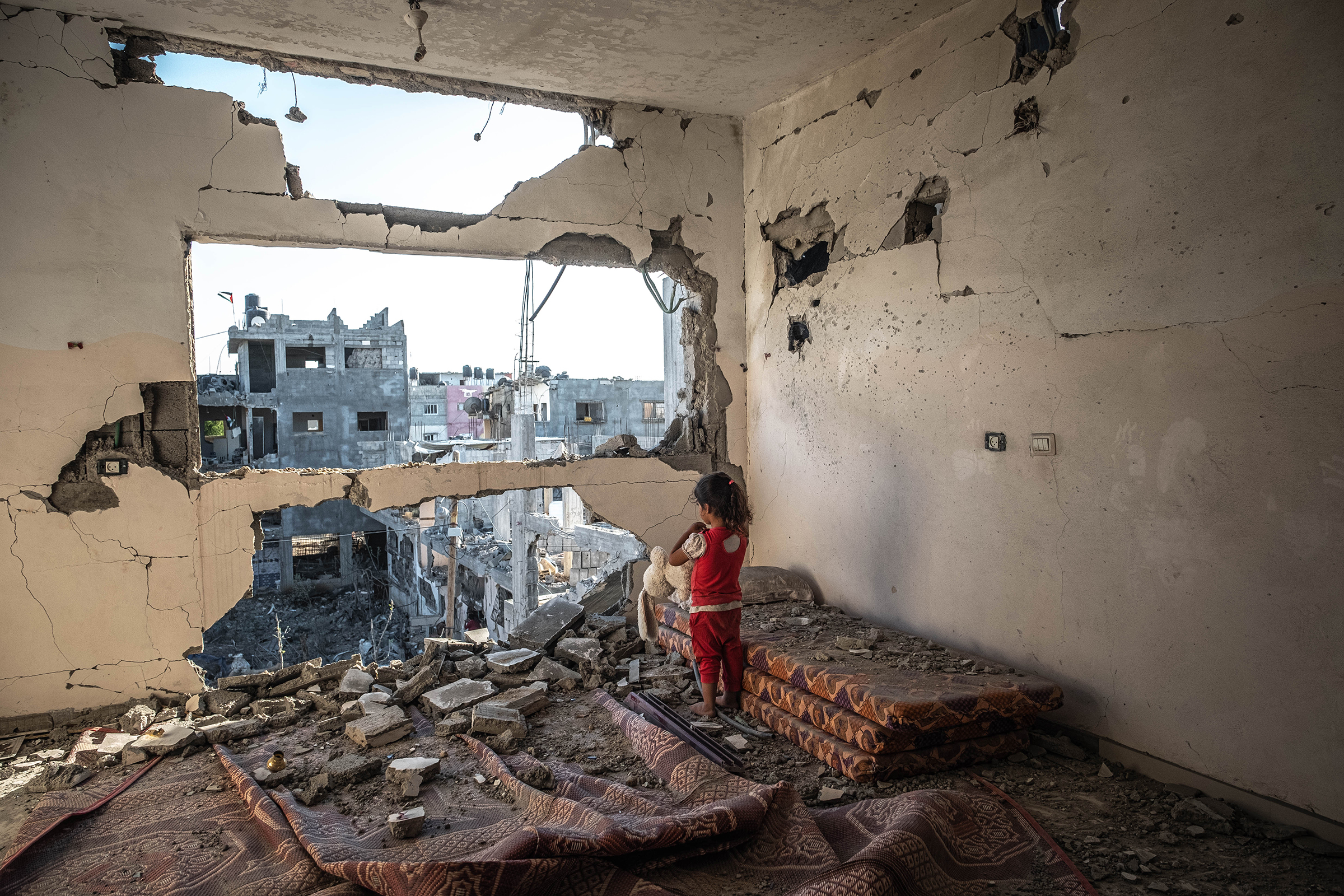
‘Expressed Her Pain With Silence’
On May 20, Israel and Palestinian militant group Hamas agreed to a cease-fire after 11 days of the most intense fighting in years, which left 12 people in Israel and more than 250 Palestinians dead. On assignment in Gaza, photographer Fatima Shbair headed straight to the heavily bombed city of Beit Hanoun.
Shbair began speaking with families who were affected by the conflict, listening to their stories and walking through their houses to document the destruction. She met a young girl named Raghad Naseer and with her family entered their home. Raghad accompanied Shbair from room to room, clutching her teddy bear. “I asked Raghad about her room and where she was sleeping, then she took me to it,” Shbair says. “She stood in her room in complete silence, contemplating what happened to the neighborhood through the destroyed wall of her room, as if she still could not comprehend what had happened.”
Raghad’s family has now permanently left the neighborhood, moving to a small house far away. “Taking this picture, it made me think: my home could have been like this at any moment, and I would have lived the same moment and feeling,” Shbair says. “Raghad expressed her pain with silence. I learned from her that sometimes through silence we are able to derive some strength to continue life.”
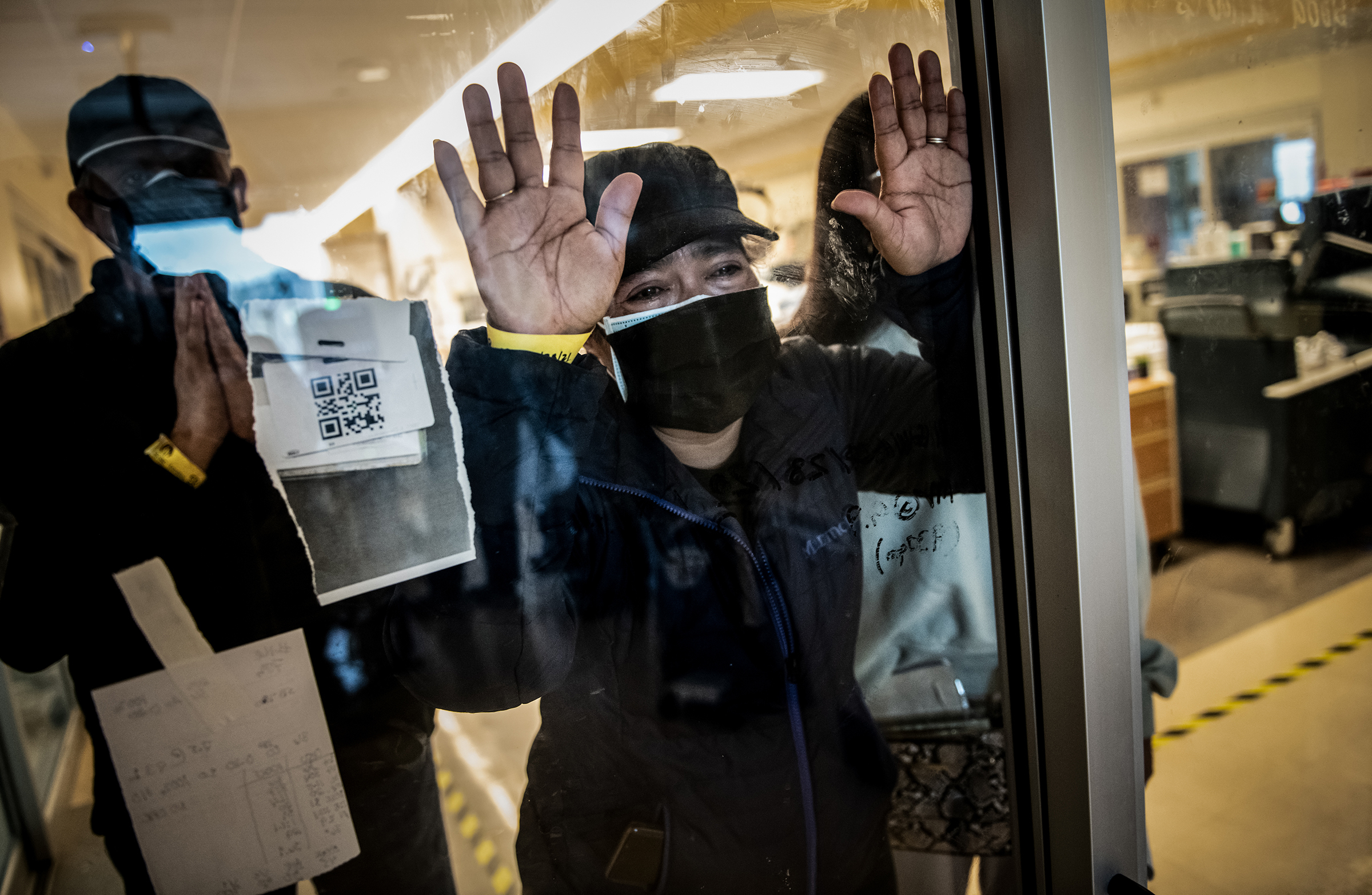
‘Show the Public Those Hard Truths’
During Los Angeles County’s COVID-19 surge in January, before vaccines were widely available, Black and Latino residents died at a rate two to three times higher than that of white residents. Photojournalist Meridith Kohut spent two weeks embedded with health care staff, working 15-18 hour days to document that stark racial and economic divide for The New York Times Magazine.
Felipe Cruz, an AC technician, was admitted to the hospital on Jan. 1, 2021— his 48th birthday. He remained there for nearly a month. “I met his family on Jan. 28 when doctors brought them into the ICU and explained that his organs were failing, and that there was nothing more they could do,” Kohut says. Shortly after, Cruz’s family made the difficult decision to remove his ventilator—and agreed to have the incredibly painful and intimate moment documented in order to show others how COVID-19 was devastating working-class Latino families in their community.
María, Cruz’s wife, and Maritza, his daughter, watched pressed against the glass door, shouting to him how much they loved him and encouraging him to be brave, Kohut says. “María wanted to be by his side, but doctors would not permit her inside his contaminated room, for her safety. Tears streamed down her face as she shouted “fly high, my love,” in Spanish as his heart rate monitor flattened.”
“I was reluctant to photograph such an intense moment of pain,” Kohut says. “I struggled to raise my camera, instead of putting it down and comforting her.”
Kohut says the task of photographing dying and grieving people during the COVID-19 pandemic has taken an emotional toll, often finding the back of her camera “soaked” by her own tears, she says. “But in a health crisis, it is the responsibility of photojournalists to report from the frontline, and show the public those hard truths,” she adds. “Documenting death is one of the most profound ways to get others to pay attention, take the crisis seriously, and take precautions to prevent themselves and others from getting sick, too.”

‘Understand What Your Limits Are’’
As wildfires burned uncontrollably across Greece for a week in early August, photographer Konstantinos Tsakalidis made his way to the island of Evia, where residents and tourists were being forced to evacuate. On the morning of Aug. 8, he was working in the village of Gouves, in northern Evia and decided to leave an observation point to photograph residents reacting to the sight of the fire approaching their homes. “I saw from a distance a woman dressed in black moving awkwardly outside a house”—one of the closest buildings to the burning forest, Tsakalidis says.
That woman was 81-year-old Panayiota Kritsiopi–Nomidi. As Tsakalidis approached her, he heard her shouting towards her home, calling for her husband. She invited Tsakalidis into her yard. “She told me about all the hard work they had put into their home, which was now in danger of being lost to the fire, and the lack of government intervention to put out the fire,” he says. “As she was telling me this, the flames swallowed up the pine forest behind the house. That was the moment I took the picture”
Tsakalidis alerted Kritsiopi–Nomidi’s neighbors to her situation to make sure she and her husband could make it out safely. (They did, and their house also escaped the fire.)
The greatest challenge in covering dangerous situations like wildfires is “ to understand what your limits are” in terms of safety, Tsakalidis says. “I was able to keep calm, trust my instincts and function professionally, managing to capture images that convey in the best way the situation of the residents of the island,” he says. “That can be a hard call in a stressful situation like this, especially as it is a story from my own country with people who could have easily been members of my own family.”
More from TIME
More Must-Reads from TIME
- Why Biden Dropped Out
- Ukraine’s Plan to Survive Trump
- The Rise of a New Kind of Parenting Guru
- The Chaos and Commotion of the RNC in Photos
- Why We All Have a Stake in Twisters’ Success
- 8 Eating Habits That Actually Improve Your Sleep
- Welcome to the Noah Lyles Olympics
- Get Our Paris Olympics Newsletter in Your Inbox
Contact us at letters@time.com
